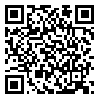1. Alamdari K (2009). Report of the first chapter on the Ancient Studies of Northern Boyer Ahmad (Volume II), Yasouj: Kohgiluyeh and Boyerahmad Cultural Heritage, Tourism and Tourism Organization (Unpublished). [Persian]
2. Azadi A (2008). Report of the first chapter of Kohgiluyeh regional archaeological research. Tehran: Archaeological Research Center (unpublished). [Persian]
3. Estakhri, AIE (2018). Mamalek and Masalek, Testari M, Translator, 2nd Edition, Tehran: Sokhan publication. [Persian]
4. Gaubeh H (1998). Arjan and Kohgiluyeh from Arabs, conquest to the end of the Safavid period. Farhudi S, Translator, 2nd Edition, Tehran: Printing and Publishing Organization of the National Artifacts. [Persian]
5. Gharachanlou H, Rahnamaee MT, Jodaki H (2011). Historical Geography: Alignment of time and field, Book of the Month of History and Geography. 163:8-13. [Persian]
6. Ghezelbash E, Parviz A (2013). Kombus Bonary: An Islamic Settlement in the Southern Zagros, Archaeological studies. 5(2):113-128. [Persian]
7. Hodgson M (2001). Ismaili sect, Badrei F, Translator. Third Edition, Tehran: Amozesh-Enghelab-Eslami Publication, P; 500. [Persian]
8. Hosseini Fasaei H (2003). Naseri's Farsnameh, Third Edition, Tehran: Amir Kabir Publication. [Persian]
9. Balkhi I (2007). Farsnameh, First Edition, Tehran: Asatir Publication. [Persian]
10. Ibn Hauqel (1966). Sourat al-Arz, Shoar J, Translator. Tehran, Bonyad-e Farhang-e Iran. [Persian]
11. Jones M, Jones R, Woods M, Whitehead M, Dixon D, Hannah M (2004). An introduction to politiIcal Geography: Space, place and politics, 2nd Edition, New York: Routledge Publication. [
DOI:10.4324/9780203626979]
12. Karimi B (1957). Ancient Rotes of the Old Capitals of Western Iran, Tehran: Bank Melli Iran. [Persian]
13. Khalidian S, Karimian H, Pourahmad A, Mazaherian H (2016). The Spatial Pattern of Iranian Old Cities in the Transition from the Sassanid to the Islamic Period. Archaeological studies. 8(2):35-52. [Persian]
14. Labbaf- Khaniki M (2010). Historical Archaeology: Principles and Capabilities. Modares Archaeological Reaserch. 2(3):2-7. [Persian]
15. Majidi, NM (2013). History and Geography of Kohgiluyeh and BoyerAhmad, First Edition, Tehran: Aron Publications. P; 874. [Persian]
16. Moghaddasi AM (2006). Ahsan Al-Taghasim Fi Marefat Al-Aghalim, Monzavi AN, Translator. 2nd Edition. Tehran: Komesh Publication. [Persian]
17. Mohamadifar Y (2005). Historical Geography of the Central Zagros in the pre-Islamic period. Payam Bastanshenas. 4:81-92. [Persian]
18. Moradi E (2014). Location of Marhashi on the Basis of Historical and Archaeological Data, Archaeological studies, 6(1):99-110.
19. Mortezai M, Farhani A (2010). An Archaeololigical study on the Location of the Ancient City of Veymeh
20. or Deymeh, Archaeological studies. 1(2):103-120. [Persian]
21. Mostofi H (1957). Nozhat Al-Gholoub, Compiled by Mohammad Dabir Siaghi, Tehran: Tahouri Library. [Persian]
22. Orsner CE (1998). The Archaeology of the African Diaspora, Annual Review of Anthropology, 27:63-82. [
DOI:10.1146/annurev.anthro.27.1.63]
23. Rajabi N (2015). Archaeological Findings, Second Chapter: Exploring Madabad Region A. Marvdasht, Iran's Archeology. 9(5):175-194. [Persian]
24. Schwartz P (2003), Historical Geography of Persia, Jahandari K, Translator. 2nd Edition. Tehran: Cultural Heritage Society. [Persian]
25. Murray T (2001). Encyclopedia of Archaeology: History and Discoveries, Third Edition. pp. 623-630.
26. Sepidnameh H, Khaledi S (2013). Historical Geographical Kohgiluyeh and boyerahmad. Proceeding of the First National Archaeological Conference of Iran. The University of Birjand. [Persian]
27. Sepidnameh H, Salehi Kakhki A, Azadi A (2015). Investigating the external routes of Kohgiluyeh and Boyer Ahmad during the Islamic era. Athar. 33(59):44-64. [Persian]
28. Sepidnameh H, Salehi Kakhki A, Azadi A (2016). Preliminary research on the economic aspect of Kohgiluyeh and Boyer Ahmad during Islamic era based on archaeological evidence and historical sources, Payam e Bastanshenas. 12(23):103-122. [Persian]
29. Sepidnameh H, Salehi Kakhki A (2016). Kohgiluyeh nomadic habitats in the islamic period (case study of deliyasir), Humanistic Researches, Iran. 6(2):155-177. [Persian]
30. Sepidnameh H, Salehi Kakhki A (2018). The Significance of Kohgiluyeh in Maritime Trade Prosperity of the Silk Road in the Islamic Period, The third National Archaeological Conference and Conservation along the Silk Road abstracts, Tehran: Research Institute of Cultural Heritage & Tourism, pp.122-124.
31. Shahidi Marnani N, Ghayumi Bid Hendi M (2013). Cultural Historical Approach and its Feasibility and Benefits in study of the Architectur of Iran, Cultural History studies. 5(17):87-107. [Persian]
32. Siahpour K (2013). Gilooyeh clan and their social political role in Abbasids period (2nd and 3rd centuries). Iranian Studies. 2(1):83-103. [Persian]
33. Sumner W, Whitcomb D (1999). Islamic Settlement and Chronology in Fars: an Archaeological perspective. Iranica Antiqua. 34:310-324. [
DOI:10.2143/IA.34.0.519117]
34. Yaghmayi E (1994). Tang-e Takab Behbahan and Dezhmahtabi Caravanserai. Cultural Heritage. 12:236-244. [Persian]
35. Hamwi Y (1995). Mojaem al-Baladan, Beirut: Darsader Publications. [Arabic]
36. Yousefifar Sh (2010). Patterns of urbanization and urbanization in Iranian history. Iran History. 64(5):145-170. [Persian]
37. Zarei ME, Noruzi AA (2016). The Livelihood patterns of Iran's South-western Cities in Texts of Islamic Period (10th- 15th A.D). Historical Research. 8(2):1-20. [Persian]








